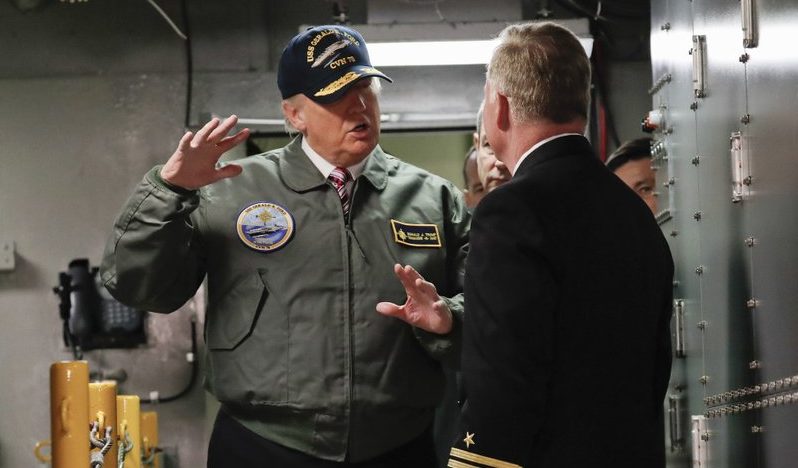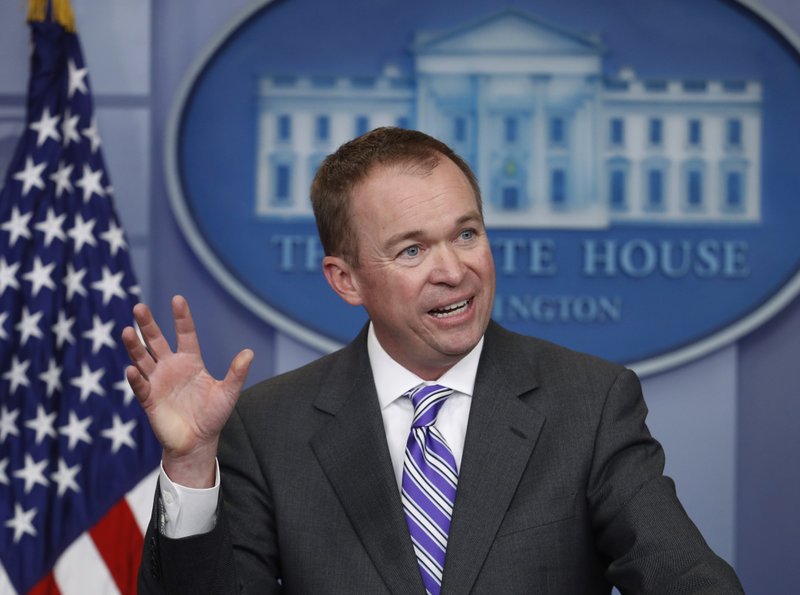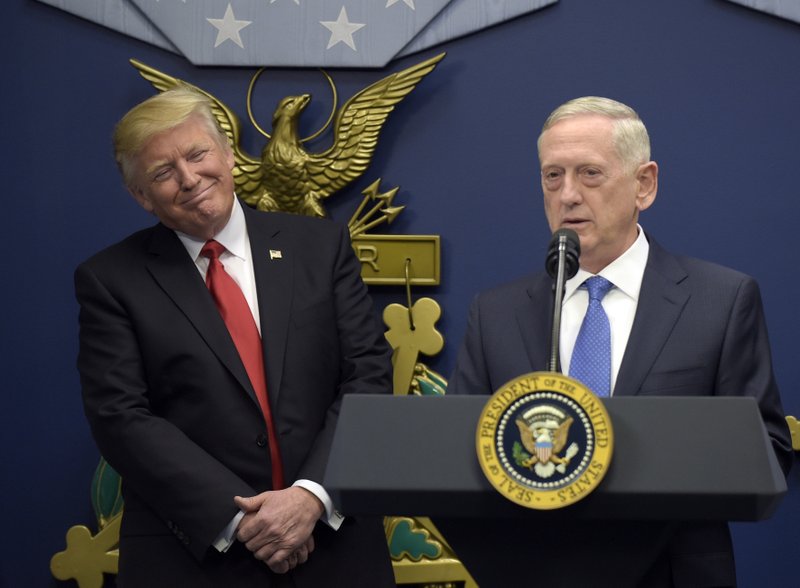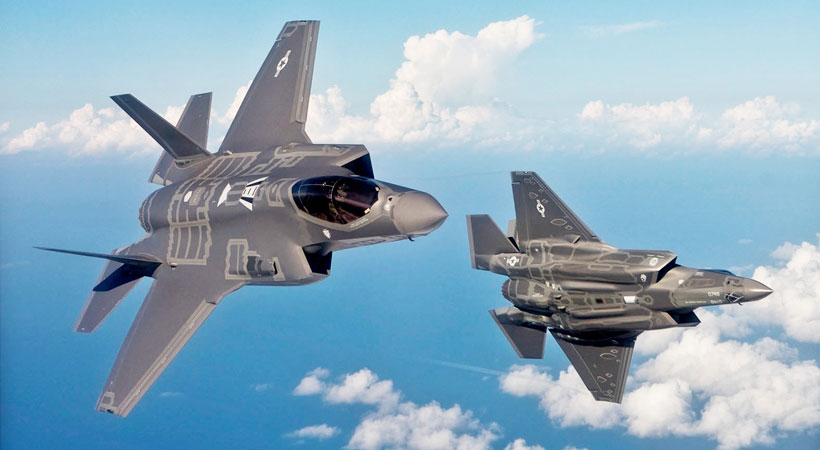Bradley Byrne: Funding our nation’s military

Over the last five years, our nation’s military has seen funding cuts while being asked to do more and more around the globe. This has resulted in a severe readiness crisis. For example, some of our Marines have been forced to get parts for their F-18s off of planes in a museum. That is simply absurd and deeply troubling. Just as bad, less than one-third of Army forces are at acceptable readiness levels for ground combat. And our pilots are getting less training than many of our adversaries. It is clear that budget cuts have really thinned out our military and hurt our ability to train and prepare for conflict. This is putting our military men and women at even greater risk. Given these serious readiness issues, I am pleased to report that last week the House of Representatives passed the defense funding bill for the remainder of Fiscal Year 2017. By passing this bill in a strong 371 to 48 vote, the House further reaffirmed our strong, bipartisan commitment to supporting the U.S. military. The bill includes $577.9 billion in funding for our military, which is an increase of $5.2 billion over last year’s funding levels. The bill fully funds a pay raise for our military and provides for 1,305,900 active-duty troops and 813,200 Guard and Reserve troops. Just as important, the bill funds ongoing military operations against ISIS, al-Qaeda, and other terrorist organizations. The bill also includes some good news for Alabama’s shipbuilding industry. The bill funds the construction of three more Littoral Combat Ships (LCS), which are the Navy ships built by Austal USA in Mobile. Austal directly employs over 4,000 people at their shipyard in Mobile, and countless other jobs are tied to the shipyard. Working with my House and Senate colleagues, I am proud we were able to secure funding for the construction of three more Littoral Combat Ships. These ships are a key component of the Navy’s fleet, and the additional funding is vital to the future of the Austal shipyard in Mobile. I am proud to have fought for this funding to be included in the bill, but the fight for a larger Navy and more Littoral Combat Ships never stops. Last week, I also testified before the House Defense Appropriations Subcommittee, where I asked for three more Littoral Combat Ships to be funded in next year’s defense bill. The Navy has made clear they have a high demand for the full complement of 52 Littoral Combat Ships. The defense funding bill also falls in line with President Donald Trump’s proposed increases to defense spending and makes much needed progress toward helping our military regain its footing. From the fight against ISIS to Russian aggression to China’s actions in the Pacific to North Korea’s continued weapons testing, it is more important than ever that our military be able to operate at full strength. Given the global threat environment, I sincerely hope Senate Democrats will not play politics with the funding for our military. In the past, we have seen them attempt to hold military funding hostage until Republicans agreed to across-the-board funding increases for other, non-defense programs. This is reckless and irresponsible. We must ensure our military men and women have the funding needed to do their job and keep the American people safe. I call on the Senate to quickly pass this defense funding bill and send it to President Trump’s desk for his signature. Reversing the readiness crisis and ensuring our military men and women have the funding and resources to do their job is a fundamental responsibility of Congress. • • • Bradley Byrne is a member of U.S. Congress representing Alabama’s 1st Congressional District.
Donald Trump, aboard Navy carrier, vows to boost defense spending

President Donald Trump pledged to boost defense spending as he basked in the nation’s military might aboard a next-generation Naval aircraft carrier on Thursday. Wearing an olive green military jacket and blue ball cap, Trump vowed to mount “one of the largest” defense spending increases in history. “Hopefully it’s power we don’t have to use, but if we do, they’re in big, big trouble,” Trump said. Trump spoke from the Gerald R. Ford, a $12.9 billion warship that is expected to be commissioned this year after cost overruns and delays. He touted his spending plans, saying he would provide “the finest equipment in the world” and give the military the “tools you need to prevent war.” The president also toured the carrier and met with sailors and military leaders. He saluted the sailors as he arrived on the carrier. Before his remarks, Trump was asked about the revelation that Attorney General Jeff Sessions twice talked with Moscow’s U.S. envoy during the campaign, contact that seems to contradict Sessions’ sworn statements to Congress during his confirmation hearings. While there were mounting calls for Sessions to resign or recuse himself, Trump stood by Sessions on Thursday, saying he had “total” confidence in his attorney general. Asked if Sessions should recuse himself, Trump said: “I don’t think so.” Trump also said he “wasn’t aware” that Sessions had spoken to Russia and said that he “probably did” speak truthfully to the Senate. During his trip to Newport News, Trump was joined aboard Air Force One by Defense Secretary Jim Mattis. A draft budget plan released earlier this week by the White House would add $54 billion to the Pentagon’s projected budget, a 10 percent increase. The U.S. currently spends more than half trillion dollars on defense, more than the next seven countries combined. “To keep America safe, we must provide the men and women of the United States military with the tools they need to prevent war,” Trump said in his address to Congress on Tuesday night. Trump, in his 2016 campaign, repeatedly pledged to rebuild what he called the nation’s “depleted” military and told supporters at Regent University in Virginia Beach in October that the region’s naval installations would be “right at the center of the action with the building of new ships.” He often argued that the U.S. military is too small to accomplish its missions and pledged to put the Navy on track to increase its active-duty fleet to 350 ships, compared to the current Navy plan of growing from 272 ships to 308 sometime after 2020. The PCU Gerald R. Ford CVN 78, located at Newport News Shipbuilding, will be the first of the Navy’s next generation of aircraft carriers and is expected to accommodate some 2,600 sailors. Trump’s speech to a joint session of Congress, his first as president, included his past calls for repealing the “defense sequester,” or across-the-board budget cuts instituted by Congress. He will need the repeal to achieve the kinds of increased defense spending that he is seeking. Republished with permission of The Associated Press.
Donald Trump to push Pentagon upgrade aboard US aircraft carrier

Embracing a stronger defense, President Donald Trump intends to meet with sailors and shipbuilders on an aircraft carrier in Virginia to promote his plans for a major military buildup. Trump is traveling Thursday to Newport News to deliver a speech aboard the Gerald R. Ford, a $12.9 billion warship that is expected to be commissioned this year after cost overruns and delays. He also is meeting with the carrier’s builder. A draft budget plan released earlier this week by the White House would add $54 billion to the Pentagon’s projected budget, a 10 percent increase. “To keep America safe, we must provide the men and women of the United States military with the tools they need to prevent war,” Trump said in his address to Congress on Tuesday night. Trump, in his 2016 campaign, repeatedly pledged to rebuild what he called the nation’s “depleted” military and told supporters at Regent University in Virginia Beach in October that the region’s naval installations would be “right at the center of the action with the building of new ships.” He often argued that the U.S. military is too small to accomplish its missions and pledged to put the Navy on track to increase its active-duty fleet to 350 ships, compared to the current Navy plan of growing from 272 ships to 308 sometime after 2020. The PCU Gerald R. Ford CVN 78, located at Newport News Shipbuilding, will be the first of the Navy’s next generation of aircraft carriers and is expected to accommodate some 2,600 sailors. Trump’s speech to a joint session of Congress, his first as president, included his past calls for repealing the “defense sequester,” or across-the-board budget cuts instituted by Congress. He will need the repeal to achieve the kinds of increased defense spending that he is seeking. Republished with permission of The Associated Press.
Big surge for military in Trump budget, big cuts elsewhere

President Donald Trump is proposing a huge $54 billion surge in U.S. military spending for new aircraft, ships and fighters in his first federal budget while slashing big chunks from domestic programs and foreign aid to make the government “do more with less.” The Trump blueprint, due in more detail next month, would fulfill the Republican president’s campaign pledge to boost Pentagon spending while targeting the budgets of other federal agencies. The “topline” figures emerged Monday, one day before Trump’s first address to a joint session of Congress, an opportunity to re-emphasize the economic issues that were a centerpiece of his White House run. Domestic programs and foreign aid would as a whole absorb a 10 percent, $54 billion cut from currently projected levels — cuts that would match the military increase. The cuts would be felt far more deeply by programs and agencies targeted by Trump and his fellow Republicans, like the Environmental Protection Agency as well as foreign aid. Veterans’ programs would be exempted, as would border security, additional law enforcement functions and some other areas. “We’re going to start spending on infrastructure big. It’s not like we have a choice — our highways, our bridges are unsafe, our tunnels,” the president told a group of governors at the White House on Monday. He added, “We’re going to do more with less and make the government lean and accountable to the people.” However, Trump’s final version of the budget is sure to leave large deficits intact — or even add to them if he follows through on his campaign promise for a huge tax cut. His plan faces strong opposition from Democrats, who possess the power to block it. The immediate reaction from Republicans was mixed, with prominent defense hawks like Sen. John McCain of Arizona saying it would do too little to help the Pentagon and fiscal conservatives and supporters of domestic agencies expressing caution. The White House indicated that the foreign aid cuts would be particularly large. Asked about those plans, top Senate Republican Mitch McConnell of Kentucky would say only, “We’ll see how it works out.” A congressional showdown is inevitable later this year, and a government shutdown a real possibility. White House Budget Director Mick Mulvaney said the spike in Pentagon spending would bring the total defense budget to a record $603 billion — and that’s before including tens of billions of dollars for overseas military operations. The United States already spends more on defense than the next seven countries combined, but military leaders have complained repeatedly that aircraft are aging. Congress was told recently that the average age of Air Force aircraft is 27 years, and more than half of the service’s inventory would qualify for antique vehicle license plates in Virginia. “It is a true America first budget. It will show the president is keeping his promises and will do exactly what he said he was going to do,” Mulvaney said. “It prioritizes rebuilding our military, including restoring our nuclear capabilities, protecting the nation and securing the border, enforcing the laws currently on the books, taking care of vets and increasing school choice.” The border wall would cost $2.9 billion in 2018, according to draft documents for the Department of Homeland Security, which assume the agency would hire 500 new members of the Border Patrol and 1,000 new Immigration and Customs Enforcement agents next year. Detention beds for apprehended immigrants would receive $2 billion over current-year spending. The Transportation Security Administration ticket fee would increase by $1 to $6.60 for each one-way flight. Senate Democratic leader Chuck Schumer of New York said, “It is clear from this budget blueprint that President Trump fully intends to break his promises to working families by taking a meat ax to programs that benefit the middle class.” Mulvaney said the plan wouldn’t add to the budget deficit — currently projected to hit about $500 billion next year — but it wouldn’t reduce it, either. The administration again made clear that the government’s largest benefit programs, Social Security and Medicare, would be exempt from cuts when Trump’s full budget submission is released in May. GOP Rep. Mike Simpson of Idaho, a member of the Appropriations Committee, said the large cuts Trump envisions making to domestic programs won’t fly. “There’s a lot of members that have a lot of interest in a lot of these programs,” Simpson said. “There’s more to our government than just defense.” But McCain said Trump’s Pentagon plans would fall short by almost $40 billion and represent just a small increase over former President Barack Obama’s recent Pentagon wish list. “With a world on fire, America cannot secure peace through strength with just 3 percent more than President Obama’s budget,” said McCain, chairman of the Armed Services Committee. On Monday, tentative proposals for the 2018 budget year that begins Oct. 1 were being sent to federal agencies, which will have a chance to propose changes. Before the new budget year, there’s an April 28 deadline to finish up spending bills for the current 2017 budget year, which is almost half over, and any stumble or protracted battle could risk a government shutdown then as well. There’s expected to be an immediate infusion of 2017 cash for the Pentagon of $20 billion or more, and also the first wave of funding for Trump’s promised border wall and other initiatives like hiring immigration agents. Republished with permission of The Associated Press.
Gary Palmer presents medals to family of fallen 6th District solider

Alabama 6th District U.S. Rep. Gary Palmer and former Alabama U.S. Rep. Spencer Bachus presented several awards and medals to the family of one of Alabama’s fallen war heroes, Melvin Spruiell this week. The long overdue recognition was given for Spruiell’s part in the World War II D-Day Invasion of Europe. In the summer of 1944, Spruiell served as a Forward Artillery Observer with the 377th Parachute Field Artillery Battalion, First Lt. He exposed himself to enemy fire to locate a working radio in order to call in artillery to suppress and dislodge the enemy from their defensive position. He then volunteered as an infantryman, separating himself from his battalion, and led a charge across an open field to take out an enemy machine gun nest. During that action, First Lt. Spruiell was killed. “His actions are in keeping with the highest traditions of military service and reflect great credit upon himself, the 101st Airborne Division, and the Army of the United States,” Palmer said in a Facebook post. Spruiell graduated from Auburn University with a degree in chemical engineering, received a Masters at Tennessee, and a Doctorate at OSU. First Lt. Spruiell’s family was presented with the following medals: the American Campaign Medal the European-African-Middle Eastern Campaign Medal with Arrowhead Device one Bronze Service Star the World War II Victory Medal the Purple Heart the Distinguished Service Cross. “Men like First Lt. Spruiell are the reason America remains the home of the free and the land of the brave,” Palmer concluded.
Donald Trump’s proposed big military budget no sure thing

Republicans control Congress so President Donald Trump‘s pledge to boost the Pentagon budget by tens of billions of dollars should be a sure bet. It’s not. Trump faces skeptical Democrats whose support he’ll need and resistance from fiscal conservatives opposed to repealing a 2011 law that set firm limits on military and domestic spending. Unless the president figures out a way to mollify the disparate camps, he’ll have a tough time delivering on a signature campaign promise to rescue the armed forces from a festering financial crisis. Senior U.S. commanders have flatly warned that the spending caps set by the Budget Control Act are squeezing the armed forces so hard that the number of ready-to-fight units is dwindling. That means beating powers such as Russia or China is tougher than it used to be as aging equipment stacks up, waiting to be repaired, and troops don’t get enough training. Gen. Daniel Allyn, the Army’s vice chief of staff, startled many lawmakers when he testified recently that just three of the service’s 58 active-duty and reserve brigade combat teams are ready to fight at a moment’s notice. Allyn and other four-star officers pleaded during separate hearings in the House and Senate for the spending limits to be repealed, clearing the way for the bigger budgets they say are needed to stop the military’s readiness for combat from decaying further. “We need to act now before it’s too late,” said Gen. Stephen Wilson, the Air Force’s vice chief of staff. The average age of Air Force aircraft is 27 years, according to Wilson, who added that more than half of the service’s inventory would qualify for antique vehicle license plates in Virginia. On top of that, the Air Force is short 1,500 pilots and 3,400 aircraft maintainers, he said. The Navy and Marine Corps are experiencing the same turbulence. Trump, speaking at a White House news conference Thursday, said he’s ordered a plan for a “massive rebuilding” of the armed forces. He didn’t disclose how much he expected his blueprint to cost. National security hawks in Congress have suggested a defense budget of $700 billion in 2018 — more than at any point during the wars in Iraq and Afghanistan. The total, which includes $60 billion for overseas combat operations, is $91 billion over the mandatory spending cap. That’s just a down payment to begin digging out of a readiness problem the Pentagon’s top brass says will take years to fix. GOP Sen. John McCain of Arizona, chairman of the Senate Armed Services Committee, has envisioned annual increases of between 3 percent and 4 percent, culminating with an $800 billion budget for the armed forces in 2022. Securing these sizable and sustained increases will require repealing the Budget Control Act. Trump, however, has proposed to eliminate only the budget limit on defense. That’s a nonstarter for Democrats, who have long demanded parity between the two broad categories of federal spending. They’ve argued that Trump’s approach will continue to restrict the budgets of the departments of State, Treasury and Justice, all of which play essential national security roles. “We’ve always insisted, on our side of the aisle, that as long as the caps are in place, there should be equal relief,” said Sen. Tim Kaine of Virginia, the top Democrat on the Senate Armed Services readiness subcommittee. Trump will need at least a handful of Democrats on his side: It’ll take 60 votes in the Senate to undo the budget law and Republicans hold 52 seats. Republicans hold a larger majority in the House, but the party’s deficit hawks are a significant obstacle. They see the caps as blunt yet effective tools to curb federal spending and prevent the national debt from spiraling further out of control. “We’re walking into a financial train wreck that is going to have implications not just in terms of national security but in terms of everyone’s financial security,” said Rep. Mark Sanford, R-S.C. “It would be disastrous to simply abandon the caps with no other alternative in place.” But not everyone is convinced that the Pentagon is struggling so mightily. Lawmakers such as Rep. Jackie Speier, a liberal California Democrat and a member of the House Armed Services Committee, contend the current defense budget of $611 billion is already more than China and Russia spend on their militaries combined. On top of that, money is being wasted on bases and installations that are no longer needed but remain open because the GOP-led Congress has so far refused to allow a new round of base closures. “No one wants to see bases close,” Speier said. “But we have a certain pot of money and we’ve got to use it smartly.” Republished with permission of The Associated Press.
Martha Roby: APT documentary delivers results for Alabama veteran

With the start of a new Congress and a new presidential administration in office, there’s a lot of increased interest in government right now. That’s one of the reasons I agreed to serve as the subject of “Inside Congress: Alabama to DC,” a new Alabama Public Television documentary project offering an inside look at the many roles played by a United States congressman. The film features unique, behind-the-scenes footage of my activities throughout the halls of Congress, including a hearing of the House Appropriations Committee, a meeting with Majority Leader Kevin McCarthy, and multiple office visits from constituent groups. The film also includes scenes from back home in Alabama, where filmmakers went on the road with me to capture my visits throughout the Second District. Roy Clem, Executive Director of Alabama Public Television, said the film is part of APT’s larger efforts to educate students and adults about how our government works. In fact, just last week I recorded educational pieces meant for civics classes about the separation of powers, different forms of government, and the foundations of our constitutional republic. It was a fun experience working with Roy and award-winning filmmaker Mark Fastoso who is known for his most recent work, “JEREMIAH,” the critically-acclaimed documentary profile of former U.S. Senator Jeremiah Denton. I’m honored and grateful to have had the opportunity to offer a glimpse into the inner workings of Congress and my day-to-day activities as an elected official and a mom, but the film also highlighted some of the little-known but important work we do to help constituents dealing with federal agencies. It’s no secret that many veterans seeking care for their service-connected injuries have had trouble getting treatment through the VA. For the last three years, we have worked hard to improve overall access to care at the Central Alabama VA, and much of that work has played out publicly. What is rarely seen, however, is the hard work that goes on behind the scenes when individual veterans who reach out to my office for help dealing with a sometimes difficult system. The film captures the story of Mr. Vicki Robinson, a Vietnam veteran from Prattville, who after undergoing a routine screening for cancer, never heard back from the VA. The results came back positive, but because Mr. Robinson wasn’t informed, his cancer advanced and became life-threatening. That’s when he reached out to my office for help. Thanks to the hard work of my dedicated staff, especially Charlotte Bent in my Montgomery office, we were able to get to the bottom of it and get Mr. Robinson the treatment he needed. Because the documentary shed light on this egregious oversight, the hospital has changed course for the better, and Mr. Robinson and others are now receiving improved quality of care. I’ve consistently argued that the public – especially veterans and lawmakers – should be privy to VA quality ratings for this very reason. Mr. Robinson’s story is proof that when the public applies pressure to the VA, we often achieve results. The Central Alabama VA has been improving. While I’m proud of this marked progress, we still have a long way to go and I’m so pleased that APT’s documentary project serves as further motivation to get health care right for our veterans. I hope you’ll watch “Inside Congress: Alabama to DC” on APT’s website by entering this link in your browser: http://video.aptv.org/video/2365954809/. ••• Martha Roby represents Alabama’s Second Congressional District. She lives in Montgomery, Alabama with her husband Riley and their two children.
Bradley Byrne introduces bill to give veterans full access to local care

Alabama 1st District U.S. Rep. Bradley Byrne on Tuesday introduced legislation to give veterans full access to private, local medical care. Byrne’s bill, the Full Choice for Veterans Act, expands eligibility of the Veterans Choice Program to any veteran. Under the Veterans Choice Program, veterans receive a card to get care from private doctors or hospitals. Currently, access to the VA Choice Program is limited to those who have waited longer than 30 days for VA care or those who live more than 40 miles from a VA facility. Congressman Byrne’s bill changes that and give every veteran access to health care providers in their community, regardless of a veteran’s situation. “Veterans should not be forced to remain in a VA system that is dysfunctional and broken,” said Bryne. “This is why Congress created the Choice Card program a few years ago to give veterans greater access to private medical care in their local community. Sadly, the VA created roadblocks to limit veteran access to the Choice Card program. Our veterans deserve better. “Under the Full Choice for Veterans Act, we will give veterans the choices they need and access to timely medical care. Even more, I think we can actually save taxpayer money by cutting down on the bloated VA bureaucracy. This is a win-win situation, and I look forward to working with my colleagues to advance this legislation.” Byrne introduced similar legislation to expand veteran access to private care in 2015 in the previous Congress. Watch Byrne discuss his new bill below:
First-known combat death since Donald Trump in office

It’s been described as the greatest burden any commander in chief must bear. Just days into his young presidency, a U.S. service member has died in military action authorized by Donald Trump. It’s the first known combat death of a member of the U.S. military since Trump took the oath of office on Jan. 20 and underscores the gravity of the decisions he now makes. Three service members were also wounded Sunday during the firefight with militants from al-Qaida in the Arabian Peninsula’s branch in Yemen. The raid left nearly 30 others dead, including an estimated 14 militants. A fourth U.S. service member was injured when a military aircraft assisting in the mission had a “hard landing” nearby, according to U.S. Central Command. “Americans are saddened this morning with news that a life of a heroic service member has been taken in our fight against the evil of radical Islamic terrorism,” Trump said in a statement. “My deepest thoughts and humblest prayers are with the family of this fallen service member,” he said. The names of the casualties were not released. Planning for the clandestine counterterrorism raid begun before President Barack Obama left office on Jan. 20, but Trump authorized the raid, according to a U.S. defense official, who was not authorized to discuss details beyond those announced by the Pentagon and so spoke on condition of anonymity. The U.S. has been striking al-Qaida in Yemen from the air for more than 15 years, mostly using drones. Sunday’s surprise pre-dawn raid could signal a new escalation against extremist groups in the Arab world’s poorest but strategically located country. The action provides an early window into how the new president will put his campaign rhetoric into action when it comes to foreign intervention. Trump had promised an “America first” approach and an end to the “era of nation building” if he won the White House. Many interpreted his language as isolationist and expected Trump to be more cautious about where the U.S. intervened. At the same time, Trump had broadcast a stronger posture on the world stage. He pledged to beef up the military and said he aimed to achieve “peace through strength.” Sunday’s raid was not the first time that the United States had conducted a counterterrorism raid on the ground in Yemen, but it was not the usual approach of striking from the air, the defense official said. The raid was planned as a clandestine operation and not intended to be made public, but the loss of a service member changed that, the official said, adding that no detainees were taken in the operation. An al-Qaida official and an online news service linked to the terror group said the raid left about 30 people dead, including women and children. Among the children killed was Anwaar, the 8-year-old daughter of Anwar al-Awlaki, a radical Yemeni-American cleric killed in a U.S. airstrike in Yemen in 2011, according to the girl’s grandfather. Nasser al-Awlaki told The Associated Press that Anwaar was visiting her mother when the raid took place. She was shot in the neck and bled for two hours before she died, he said. In addition to killing the militants, White House Press Secretary Sean Spicer said U.S. forces “captured a whole host of information about future plots that’s going to benefit this country and keep us safe.” The president “extends his condolences,” he said on ABC’s “‘This Week.” ”But more importantly, he understands the fight that our servicemen and women conduct on a daily basis to keep this country safe.” Just over a week ago, suspected U.S. drone strikes killed three other alleged al-Qaida operatives in Bayda in what was the first-such killings reported in the country since Trump assumed the U.S. presidency. Al-Qaida in the Arabian Peninsula, long seen by Washington as among the most dangerous branches of the global terror network, has exploited the chaos of Yemen’s civil war, seizing territory in the south and east. The war began in 2014, when Shiite Houthi rebels and their allies swept down from the north and captured the capital, Sanaa. A Saudi-led military coalition has been helping government forces battle the rebels for nearly two years. Republished with permission of The Associated Press.
Bradley Byrne: Five things to watch in 2017

In 2017, Republicans will have control of the White House, the Senate, and the House of Representatives. This is a rare situation that has happened only 16 times the past 100 years. Under a unified Republican government, there is great potential for important reforms. Here are five areas where I hope to see progress in 2017: Health Care Relief – Far too many American families are suffering under the ill-conceived Affordable Care Act. A top priority must be to repeal this disastrous law and begin moving forward with health care reforms that lower costs, boost competition, and spur innovation. Our reforms must center on free-market principles that do not put the federal government between a patient and their doctor. Any updates to our nation’s health care law must ensure that people with pre-existing conditions have access to affordable health and strengthen Medicare for our nation’s seniors. A Stronger Military – Under President Barack Obama, our military has taken a hit and that trend must be reversed. Despite these funding cuts, we continue to ask our military men and women to do more and more. Under President-elect Donald Trump, I am hopeful we will grow our military in a way that helps project peace through strength. This includes building up our Navy’s fleet with an ultimate goal of at least 350 ships. As we grow our military, we must also focus on spurring innovation to ensure we have the most advanced technology and tools available. Regulatory Reform – Unnecessary and costly government regulations are making it harder for businesses to grow, resulting in higher costs for American consumers. These regulations impact everything from energy to agriculture to labor laws. Some of these regulations can simply be blocked or repealed by the Trump Administration. Others will require action from Congress. President-elect Trump has already suggested that he will remove two regulations for every one regulation introduced. This type of regulatory reform will go a long way toward boosting economic growth. Immigration Enforcement – Over the last eight years, the Obama Administration has consistently turned a blind eye to our nation’s immigration laws. Instead of enforcing the laws on the books, they have looked for ways around the law. Well, that will change come January 20th. Having a strong immigration enforcement system is critical to our national security, and it must be a top priority. This includes securing our border and halting the flow of illegal immigrants across the border. We must also look at other parts of our immigration system to ensure American workers are being treated fairly. A Simpler Tax Code –The current tax code is far too complicated and confusing, and I have long been an advocate for wholesale tax reform that lowers rates for American families. Tax reform should make completing your taxes as simple as filling out a postcard sized form. We should also bring down our corporate tax rates, which are among the highest in the world in an effort to spur job creation and keep businesses in the United States. Tax reform is a key part of our efforts to grow the economy. Certainly, this is not an all-inclusive list and unified Republican government alone will not be enough to achieve these reforms. Under the current Senate rules, most legislation requires 60 votes in order to pass, and Republicans only have 52 Senators. I hope Senate Democrats will agree to work across the aisle to find common ground and advance these reforms. Our top priority should always be to focus on policies that benefit the American people. By doing that, I believe we can help restore faith in government and make life easier for all Americans. • • • Bradley Byrne is a member of U.S. Congress representing Alabama’s 1st Congressional District.
In reversal, US Navy won’t scrap traditional job titles

In the Navy, a corpsman will still be a corpsman. Navy leaders are dumping a plan announced in September to eliminate dozens of enlisted sailors’ job titles, some ending in “man.” They said sailors’ anger over the changes had become a distraction and they will look for other ways to modernize the system. “The bottom line is, we’re going to preserve all the good, we’re going to throw all the distractions overboard and we’re going to move on, stay on course,” Navy Adm. John Richardson, chief of naval operations, told sailors gathered in the Pentagon on Wednesday. “You showed us the way forward. … Thanks for teaching us that lesson.” The decision to drop long-held traditional titles and instead refer to sailors by their rank had signaled a sharp cultural shift for the Navy. Efforts to change titles that ended in “man” were in response to the Pentagon decision to open all combat jobs to women. In a memo, Richardson said that modernizing the job ratings or titles was designed to give sailors more flexibility in training and assignments. Switching to names more understandable to the civilian world, Navy leaders argued, would make it easier to get jobs once sailors left the service. But after hearing angry reactions from thousands of sailors, Richardson said Navy leaders believe they can find a way to provide better job flexibility without dropping the titles. The memo was released Wednesday morning, and Richardson and Master Chief Petty Officer Steven Giordano, the top Navy enlisted officer, announced it in the Pentagon. Giordano said the focus on titles had become a distraction from “our missions, our operations, our warfighting efforts.” Richardson outlined what he called a “course correction” in the memo, saying the Navy will continue to review ways to update the names. “Modernizing our industrial-age personnel system in order to provide sailors choice and flexibility still remains a priority for us,” he said. “We will need to tackle the issue of managing rating names.” The Navy called for a review of the titles in January, shortly after the Pentagon ordered that all combat jobs would now be open to women. The idea was to eliminate titles such as “chief yeoman,” ”corpsman” or “boatswain’s mate” – titles steeped in tradition but difficult for the public to translate or understand. Under the plan, sailors would have been known by their ranks, such as petty officer or chief. And job titles would be made more gender-neutral. Navy Secretary Ray Mabus, who pushed the plan, said at the time that he wanted titles to better convey the job a sailor is doing. For example, few civilians know what a hospital corpsman does, Mabus said in June. A corpsman could be called a medic or an emergency medical technician, much like “messman” was previously changed to culinary specialist, he added. Sailors opposing the decision launched a White House petition and gained some support from Capitol Hill. They said that while they liked the idea of more flexibility, they wanted to hold onto their traditional titles. Republished with permission of the Associated Press.
Montgomery makes the short list for F-35s stealth fighter jets

The U.S. Air Force announced Wednesday Montgomery-based 187th Fighter Wing at Dannelly Field Air Guard Station could be the future home to roughly 18 F-35s. The airfield is one of five installations still under consideration. Before the Air Force makes its final decision there will be an Environmental Impact Study along with a public comment period. The entire decision process could take up to two years. If selected, the F-35s might not arrive at Dannelly Field until 2021 or 2022. Alabama 7th District. U.S. Rep. Terri Sewell has been among those in Alabama advocating the 187th and Dannelly Field for the F-35 assignment. “I am excited that the 187th Fighter Wing, located at Dannelly Field, has made it through the first round of cuts by the Air Force to receive the coveted new Joint Strike Fighters,” said Sewell. “The 187th Fighter Wing has an unparalleled legacy of excellence worthy of praise and our continued investment.” Sewell continued, “I continue to be a strong advocate for the 187th National Guard unit in my district. As a Member of the House Permanent Select Committee on Intelligence, I have a unique perspective on the challenges and opportunities that confront our nation. As such, I understand the importance of the 187th being awarded these new fighter jets to our mission of maintaining air-superiority and providing effective air-cover for our men and women deployed in combat zones.” Sewell’s not the only Alabama politician fighting for the the F-35s. 2nd District. U.S. Rep. Martha Roby is also dedicated to bringing the jet fighters to the Yellowhammer State. “Alabama’s 187th Fighter Wing is an excellent candidate for the F-35 program, which is evident by its placement on this short list,” Roby opined. “The F-35’s next-generation capabilities will give American aviators unquestioned air superiority in combat situations around the globe, and I have no doubt the men and women of the 187th will excel in their mission if selected for this program. The 187th Fighter Wing has long been a point of pride for our state, from its impressive combat track record in recent conflicts to its proud history as the legacy unit of the legendary Tuskegee Airmen.” According to Sewell, beyond being a point of pride for the state, the selection of the Dannelly Field would make a positive economic impact on River Region’s economy. “It is also imperative that the 187th remains a viable installation as an economic driver for the River Region,” Sewell explained. “State estimates show that the military footprint in Alabama provides 177,000 direct and indirect jobs and an economic impact totaling $17 billion, 12% of the State’s GDP. Consequently, changes to the force or structure of the military in Alabama are felt across the State, and particularly in areas where installations are located, such as Montgomery, Alabama.” The F-35 is the military’s most cutting-edge war machine that will eventually replace many Cold War-era fighters like the F-16 currently flown by the 187th. The other bases being considered are Jacksonville Air Guard Station in Florida, Gowen Field in Idaho, Truax Field Air Guard Station in Wisconsin and Selfridge Air National Guard Base in Michigan.


